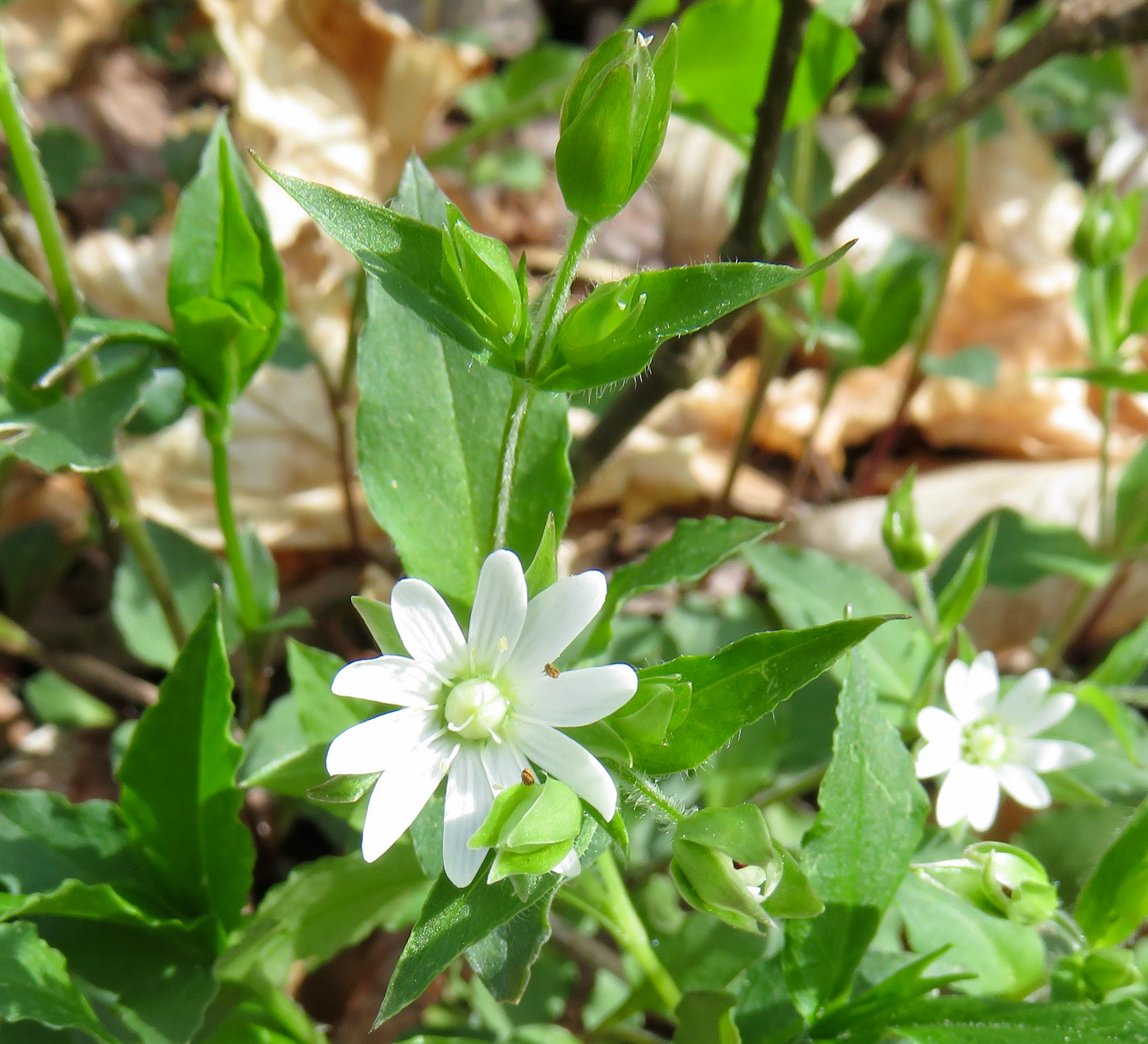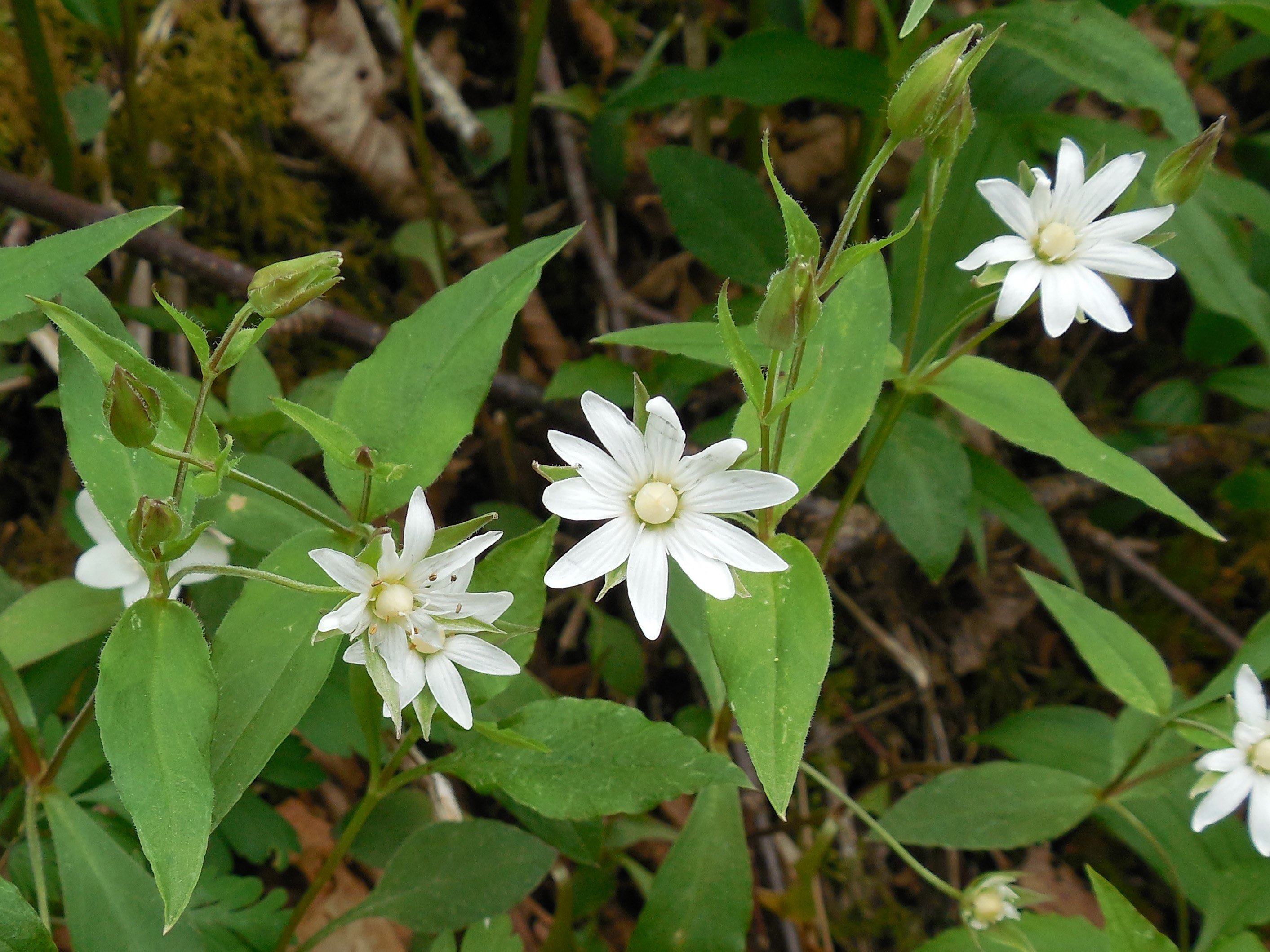NC Native Plant Society:
Plant Details
Stellaria corei
Tennessee Starwort
Scientific Name: |
Stellaria corei |
|---|---|
Genus: |
Stellaria |
Species Epithet: |
corei |
Common Name: |
Tennessee Starwort |
Plant Type |
Herb/Wildflower |
Life Cycle |
Perennial |
Plant Family |
Caryophyllaceae (Pink Family) |
Native/Alien: |
NC Native |
Invasive Status: |
(*Key) |
Size: |
0-1 ft. |
Bloom Color(s): |
White |
Light: |
Part Shade - 2 to 6 hours of sun per day, Less than 2 hours of sun per day |
Soil Moisture: |
Moist |
Bloom Time: |
April, May, June |
Growing Area: |
Mountains, Piedmont |
Habitat Description: |
Cove forests and seepages at moderate to high elevations, rarely escaped from cultivation. Uncommon to locally common in the NC Mountains, rare in w. Piedmont. |
Leaf Arrangement: |
Opposite |
Leaf Retention: |
Deciduous |
Leaf Type: |
Leaves veined, not needle-like or scale-like |
Leaf Form: |
Simple |
Life Cycle: |
Perennial |
Wildlife Value: |
Has some wildlife value |
Landscape Value: |
Suitable for home landscapes |
State Rank: |
S3: Vulnerable (*Key) |
Global Rank: |
G4 - Apparently Secure (*Key) |
State Status: |
W1: Watch List: Rare but Relatively Secure (*Key) |
Notes: |
Spreading growth habit. The sepals of Tennessee Starwort exceed the length of the petals, unlike Stellaria pubera, whose sepals are shorter than the petals. |
|
Like the more common Star Chickweed (Stellaria pubera), this mountain starwort/chickweed has 5 white petals that are so deeply cleft that it appears to have 10 petals. The mountain species, however, has sepals as long as the petals, unlike Star Chickweed, whose sepals are shorter than the petals. Emily Allen Wildflower Preserve, Forsyth Co., NC
Lisa Lofland Gould |
|
|
Spreads by creeping stems. Long sepals extending past the 5 white split petals. Jackson County, NC
Larry Mellichamp |
|
Links: |
https://auth1.dpr.ncparks.gov/flora/plant_list.php https://nc.audubon.org/conservation/bird-friendly-communities/bird-friendly-native-plants https://plants.ces.ncsu.edu/plants/stellaria-corei/ |
back to top
go to plant details search
go to plant images search
go to gallery home
back to Initial s Gallery
back to orchids
back to Carnivorous Plants
back to Trilliums





